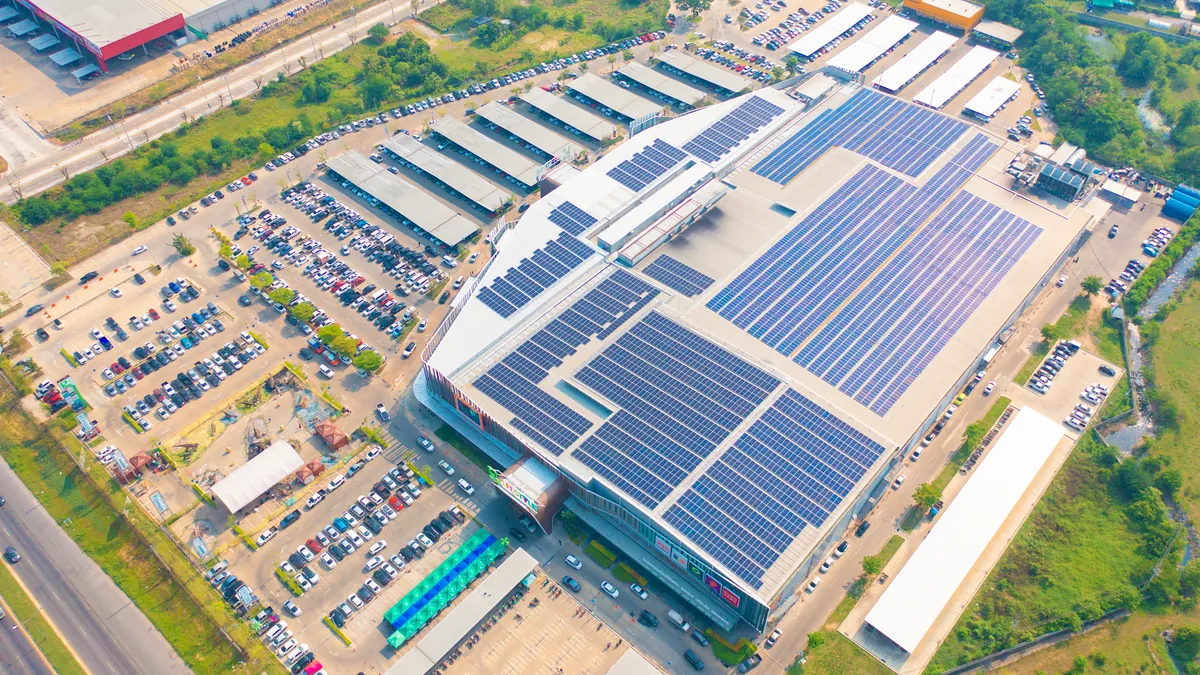Demand for clean energy is at an all-time high. According to Bloomberg New Energy Finance (BNEF), the world can expect more than 450 gigawatts of solar, wind and other renewable energy capacity to be added in 2023 – nearly 20% higher than 2022.
A big reason clean energy demand continues to accelerate is because corporations are making significant investments in decarbonizing their energy supply. In fact, a report released at the beginning of 2023 by the American Clean Power Association found that U.S. commercial and industrial (C&I) companies purchased 20 gigawatts of clean energy in 2022 – four gigawatts higher than the previous record year. In total, the report says that over 300 corporations have signed contracts for over 77 gigawatts of clean energy.
In many ways, this increased interest in clean energy has a simple explanation. Nearly 400 companies across the globe have signed up to RE100, which commits businesses to achieving 100% clean energy targets. In the U.S. rising clean energy ambitions are also being spurred by policy incentives. Last year’s passage of the Inflation Reduction Act (IRA) provides long-term incentives that make transitioning to clean energy far more financially attractive to companies. According to a Bank of America analysis, the IRA could save corporations $84 billion on their decarbonization projects.
Obstacles to clean energy goals
There are some complications and obstacles in this corporate rush towards clean energy. After years of consistent and dramatic price decreases, clean energy power purchase agreement (PPA) prices have steadily risen. According to LevelTen Energy, PPA prices in the third quarter of 2022 were up 10% compared to the second quarter and 34% higher than the year before.
At the same time, supply chain challenges and lack of sufficient manufacturing capacity has led to persistent project delays. This mix of intense demand and a desire to achieve ambitious clean energy and decarbonization targets has left corporate decision makers looking for ways to keep their goals on target.
A powerful new tool to do that is mobile energy storage. Indeed, many corporations have incorporated storage into their clean energy and decarbonization strategies. This is understandable because storage can capture electricity from intermittent generation sources like wind and solar when it is cheap and abundant and then deploy it at times of peak demand when prices skyrocket.
Storage helps offset electricity consumption during actual times of peak demand and also dramatically slashes demand charges. Typically calculated based on the maximum amount of demand a customer has in any 15-minute interval over the course of a month, demand charges can account for as much as 70% of a company’s utility bill.
The benefits of storage delivered immediately
But the reality is that a permanent energy storage system can take a long time to construct – a delay that can stall a company’s clean energy progress. “Deploying fixed assets takes time,” said Jay Bellows, a director at Nomad Transportable Power Systems. “You’re looking at significant interconnects, lots of civil work, site design and site build complications. But if you have a power purchase or net metering agreement in place, you need that storage fast.”
Mobile storage can be deployed in as little as an hour and immediately begins to deliver the peak shaving and clean energy optimization benefits that a fixed energy storage system under construction will ultimately provide. “With mobile storage, a corporate can immediately start to get the value of deploying storage along with their renewables, like peak reduction but also resiliency and disaster recovery,” Bellows said.
A flexible asset
The value of mobile storage go well beyond serving as an interim solution while a permanent storage system is developed and built. For example, companies with multiple locations across geographies can use mobile storage to maximize both their use of clean energy and avoid purchasing expensive electricity during peaks.
For instance, a company with a nationwide footprint will have to manage peak demand at different times of the year – some will be during the summer, when demand for air conditioning is high while others will be to provide heat during the winter. Mobile storage can be moved from location to location based on when those peaks occur. “If you have a C&I customer that buys a fleet of mobile storage systems, they can move them around as part of their strategy for cost avoidance,” Bellows said. “If it’s a conglomerate with lots of companies inside their portfolio, they can also lease these units internally.”
A common corporate decarbonization and clean energy strategy is to electrify vehicle fleets. What many companies are discovering, however, is that utilities need months or even years to complete the grid upgrades necessary to provide reliable charging. With mobile storage, companies don’t have to wait for the utility to finish their upgrades and can begin deploying electric vehicles as soon as they are available.
Another way mobile storage can help corporations continue progress towards climate goals is by replacing or supplementing diesel generators used to provide backup power. Diesel generators emit large amounts of carbon dioxide as well as over 40 toxic air contaminants. Mobile energy storage can reduce how frequently the generators need to operate.
“Every one of those generators is going to generate electricity to its peak. They can’t produce less if the load from a facility is less, which is always the case,” Bellows said. “Which means you are going to waste a significant amount of energy. If you use fewer generators and run all the power from the generator into a Nomad, you don’t lose anything and lower emissions.”










